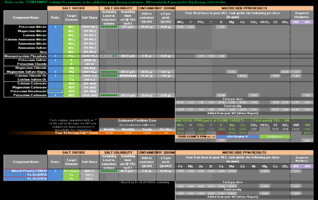kschyff
Member
Hi
I would like to start with full EI and have plugged in my tank parameters which generated the attached output (let me know if the image is too small). I use 100% RO water.
1.) Are these looking good in terms of the choices I made for the various elements? I have heard that the chloride versions dissolve better than the sulphates, but I would like to double check this.
2.) Given that Ca and Mg are integral in this EI method, do I have to remineralize when I do the WC? I would think so as the levels of Ca and Mg are not yet at their intended threshold.
3.) In South Africa I am buying the Plantex CSM+B compound without knowing exactly which one it is. Which CSM+B compounds is preferable?
Any advice welcome before I buy all of these chemicals.
Karl
I would like to start with full EI and have plugged in my tank parameters which generated the attached output (let me know if the image is too small). I use 100% RO water.
1.) Are these looking good in terms of the choices I made for the various elements? I have heard that the chloride versions dissolve better than the sulphates, but I would like to double check this.
2.) Given that Ca and Mg are integral in this EI method, do I have to remineralize when I do the WC? I would think so as the levels of Ca and Mg are not yet at their intended threshold.
3.) In South Africa I am buying the Plantex CSM+B compound without knowing exactly which one it is. Which CSM+B compounds is preferable?
Any advice welcome before I buy all of these chemicals.
Karl




